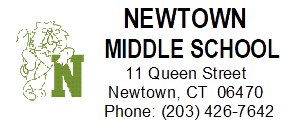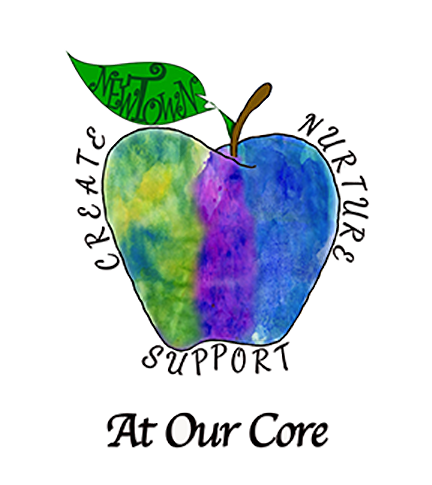Mathematics
Welcome to the Middle School Mathematics Department webpage. We hope you find the information included on this page beneficial.
Mathematics Department Roster
| 7 Red | C-Wing | Jillian Morais | |
| 7-Green | C-Wing | Michelle Maag | |
| 7-Orange | A-Wing | Elizabeth Stevens | |
| 8-Blue | C-Wing | Bonnie Hart | |
| 8-Purple | A-Wing | Katelynn Oviatt | |
| 8-Gold | A-Wing | Stephanie Han | |
| Math Specialist | C-Wing | Meg Johnson | |
| Math Interventionist | A-Wing | Kerry McKeegan |
Math Pathways
Seventh Grade Curriculum Overview
In Grade 7 Mathematics, instructional time should focus on four critical areas: (1) developing understanding of and applying proportional relationships; (2) developing understanding of operations with rational numbers and working with expressions and linear equations; (3) solving problems involving scale drawings and informal geometric constructions, and working with two- and three-dimensional shapes to solve problems involving area, surface area, and volume; (4) drawing inferences about populations based on samples.
Standards
Ratios and Proportional Relationships
Math 7 Units of Study
Math 7 Accelerated Units of Study
**The above units of study are subject to change based on the needs of the students.
**For more information, please visit the Connecticut State Department of Education’s resource page.
Standards
Ratios and Proportional Relationships
Expressions and Equations
- Analyze proportional relationships and use them to solve real-world and mathematical problems.The Number System
- Apply and extend previous understandings of operations with fractions to add, subtract, multiply, and divide rational numbers.
Geometry
- Use properties of operations to generate equivalent expressions.
- Solve real-life and mathematical problems using numerical and algebraic expressions and equations.
Statistics and Probability
- Draw, construct and describe geometrical figures and describe the relationships between them.
- Solve real-life and mathematical problems involving angle measure, area, surface area, and volume.
- Use random sampling to draw inferences about a population.
- Draw informal comparative inferences about two populations.
- Investigate chance processes and develop, use, and evaluate probability models.
Mathematical Practices
- Make sense of problems and persevere in solving them.
- Reason abstractly and quantitatively.
- Construct viable arguments and critique the reasoning of others.
- Model with mathematics.
- Use appropriate tools strategically.
- Attend to precision.
- Look for and make use of structure.
- Look for and express regularity in repeated reasoning.
Math 7 Units of Study
- Operating with Rational Numbers (Addition and Subtraction)
- Operating with Rational Numbers (Multiplication and Division)
- Algebraic Reasoning
- Two-and Three- Dimensional Geometry
- Proportional Reasoning
- Applications of Percents
- Inferences about Populations
- Probability
Math 7 Accelerated Units of Study
- Operating with Rational Numbers
- The Real Number System (8th grade unit)
- Algebraic Reasoning
- Two-and Three- Dimensional Geometry
- Pythagorean Theorem (8th grade unit)
- Proportional Reasoning
- Applications of Percents
- Inferences about Populations
- Probability
- Transformational Geometry (8th grade unit)
**The above units of study are subject to change based on the needs of the students.
**For more information, please visit the Connecticut State Department of Education’s resource page.
Eighth Grade Curriculum Overview
In Grade 8, instructional time should focus on three critical areas: (1) formulating and reasoning about expressions and equations, including modeling an association in bi-variate data with a linear equation, and solving linear equations and systems of linear equations; (2) grasping the concept of a function and using functions to describe quantitative relationships; (3) analyzing two- and three-dimensional space and figures using distance, angle, similarity, and congruence, and understanding and applying the Pythagorean Theorem.
Standards
The Number System
Know that there are numbers that are not rational, and approximate them by rational numbers.
Expressions and Equations
Work with radicals and integer exponents.
Understand the connections between proportional relationships, lines, and linear equations.
Analyze and solve linear equations and pairs of simultaneous linear equations.
Functions
Define, evaluate, and compare functions.
Use functions to model relationships between quantities.
Geometry
Understand congruence and similarity using physical models, transparencies, or geometry software.
Understand and apply the Pythagorean Theorem.
Solve real-world and mathematical problems involving volume of cylinders, cones and spheres.
Statistics and Probability
Investigate patterns of association in bi-variate data.
Mathematical Practices
Make sense of problems and persevere in solving them.
Reason abstractly and quantitatively.
Construct viable arguments and critique the reasoning of others.
Model with mathematics.
Use appropriate tools strategically.
Attend to precision.
Look for and make use of structure.
Look for and express regularity in repeated reasoning.
Math 8 Units of Study
Real Numbers
Linear Relationships I (Linear Equations in One Variable)
Pythagorean Theorem
Volume
Linear Relationships II (Linear Equations in Two Variables)
Congruence and Similarity with Transformational Geometry
Systems of Equations
Statistics and Probability
* The Math 8 Enriched class (for 8th grade students) covers all of the same units, but in more depth as time allows.
** The Math 7-8 class (for 7th grade students) covers all of the same units in more depth, in addition to the following units from the 7th grade curriculum: Proportional Reasoning and Applications of Percents
*** For more information, please visit the Connecticut State Department of Education’s resource page.
Standards
The Number System
Know that there are numbers that are not rational, and approximate them by rational numbers.
Expressions and Equations
Work with radicals and integer exponents.
Understand the connections between proportional relationships, lines, and linear equations.
Analyze and solve linear equations and pairs of simultaneous linear equations.
Functions
Define, evaluate, and compare functions.
Use functions to model relationships between quantities.
Geometry
Understand congruence and similarity using physical models, transparencies, or geometry software.
Understand and apply the Pythagorean Theorem.
Solve real-world and mathematical problems involving volume of cylinders, cones and spheres.
Statistics and Probability
Investigate patterns of association in bi-variate data.
Mathematical Practices
Make sense of problems and persevere in solving them.
Reason abstractly and quantitatively.
Construct viable arguments and critique the reasoning of others.
Model with mathematics.
Use appropriate tools strategically.
Attend to precision.
Look for and make use of structure.
Look for and express regularity in repeated reasoning.
Math 8 Units of Study
Real Numbers
Linear Relationships I (Linear Equations in One Variable)
Pythagorean Theorem
Volume
Linear Relationships II (Linear Equations in Two Variables)
Congruence and Similarity with Transformational Geometry
Systems of Equations
Statistics and Probability
* The Math 8 Enriched class (for 8th grade students) covers all of the same units, but in more depth as time allows.
** The Math 7-8 class (for 7th grade students) covers all of the same units in more depth, in addition to the following units from the 7th grade curriculum: Proportional Reasoning and Applications of Percents
*** For more information, please visit the Connecticut State Department of Education’s resource page.
Supplies
Students will need the following basic tools for the school year:
Other supplies might be requested on a teacher to teacher basis.
- pencil with eraser and pen
- stitched composition book - a graphing composition book is best for the eighth grade and Algebra I
- TI-34 calculator or an equivalent - All classes
The TI-84 (graphing calculator) is highly recommended for students taking Algebra or other high school level math course.
Other supplies might be requested on a teacher to teacher basis.
Online Resources
Need extra help with math? Want to practice your skills? Try any of these websites! Fun games and informative tutorials.
Khan Acadamy
Math-Play
Aplus Math
Interactive Sites for Education
AAA Math
Learn Zillion
Purple Math
Khan Acadamy
Math-Play
Aplus Math
Interactive Sites for Education
AAA Math
Learn Zillion
Purple Math

